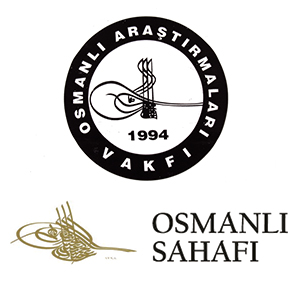Prof. Dr. Ahmed Akgündüz
Mahmud II succeeded in reforming the Ottoman Administrative Organization of 400 years, which would be completed after Tanzimah (Reforms). However, that reformation which was merely made of useless imitation of Europe did no farther than formality. The majority of the reforms pertained to the central organization of the Ottoman State. Mahmud II, who felt himself stronger after he had abrogated the Janissary Corps in 1241/1826, realized the following significant amendments in the central organization:
Two important supreme councils were established in order to restore the manner of counsel as the Imperial Council, which formed the core of the Central Organization, had lost its quality of being a council and again in order to distinguish the executive and judicial tasks, which was formerly carried out by the Imperial Council: The first is Majlis al-Akhqam al-Adliyyah, which was established to execute the legislative authority and juridical task of the Imperial Council. That council maintained the judicial aspect of the Imperial Council. Again that council was charged with the task of introducing any required codes as well as any arrangements required by the country in administrative, judicial and financial fields.
The second is Dar al-Shurah al-Bab al-Ali, which was kind of a supreme executive council. The execution of the administrative function of the State was thoroughly conveyed to that institution. The said institutions that were established on Muharrem11, 1254/1837 undertook the former Imperial Council’s tasks and the senior statesmen, chiefly those ministers of the newly-formed ministries, took part in their meetings as members of those councils. In other words, both of the councils functioned as legislative and executive organs. When the Imperial Council lost its function, such administrative units as composed it also lost their significance and eventually the manner of ministries – which is current today – (ministers and Council of Ministers) began to be assumed. That is to say, the executive functions of the State were distributed among various ministries:
– The Office of Principal Executive Officer of Grand Vizier (Sadarat Qathudalığı) was abrogated and the Ministry of Interior (Nazarah al-Umur al-Mulkiyyah) was established instead (1251/1835).
– The Office of Chief Executive Assistant to Grand Vizier (Reis’ul-Quttablık) was replaced by the Ministry of Foreign Affairs (1251/1836).
– The Office of Chawusbashilik of the Sublime Porte was replaced by the Ministry of Justice (Nazarah al-Da’awi, lit. Ministry of Judicial Pleas) (1252/1836).
– Ministry of Grain and Provisions (Nazarah al-Zahirah) and Council on Public Works (Majlis al-Umur al-Nafiah) were abolished and they were replaced by Ministry of Trade (Rabi’ul-ahir 6th, 1255/1839).
– The Storehouse of Ottoman Cadastral and Other Property Records (Defterhane) was replaced by Ministry of Finance (Nazarah al-Maliyyah) in 1253/1838.
– Ministry of Gunpowder Works and the similar military administrations were replaced by Ministry of War (1251/1835). Besides, the Deliberative Council of Army was established.
– Those administrative units that look to the internal affairs of the Palace were restructured under the title of Ministry of Imperial Palace Service (Nazarah al-Andarun al-Humuyun) (1249/1833).
– Such administrative organizations pertaining to various endowments were united in 1242/1826 and Ministry of Imperial Foundations was established.
After the Office of Shaikhulislam also had been accepted as a ministry, the terms Grand Vizier (Sadrazam) and Grand Vizierate were replaced with Prime Minister and Prime Ministry in 1254/1838. And that council composed of all those ministers was titled Majlis al-Wuqalah and Hay’ah al-Waqilah, which come to mean the Council of Ministers.
Mahmud II, who had Taqwim al-Waqa’i, the first Ottoman official gazette, published and some legal arrangements as regards to the army and civil officers of the State, particularly the Penal Codes for the Army (Qanunnamah al-Jazah al-Asqeriyyah) prepared thus also became the pioneer of the Tanzimah (Reforms) Movement. Again with the Imperial Penal Codes as regards to the Legal Functionaries and Professors of the Canon Law dated 1254/1838 he intended to arrange officers of courts and sciences that executed the legislative task.
We here regret to state that reforms materialized during Mahmud II were – excluding very few thereof – formally rather than radically. Instead of receiving the science and technology of Europe, they began to imitate their clothing, and other not-so-pleasant customs. Therefore, the reforms were not quite liked by public. The statement of Damad Khalil Rif’at Pasha “Unless we get like Europe, we shall have to recede to Asia” was misapplied. The hanging of photos of Mahmud II in government offices, the compulsory wearing of jackets, trousers and fezzes, even the abolition of the Mehter band and Mehterhane (Ottoman Military music Organization) just because the Janissaries had used it and the most important of all, the introduction of the terms Prime Minister and Minister, in place of en Sadarah (Grand Vizierate) and Sadrazam (Grand Vizier) were some examples of that simple and non-fundamental Westernization. That’s why, in spite of all the reformatory movements, the reign of Mahmud II was not a period of accomplishments and successes but absolutely an era of collapse and devastation. As a matter of fact, if radical reforms had been fulfilled and no deeds had been committed against people’s beliefs, people would not only have supported the reforms and also not applauded Ibrahim Pasha the Son of Kavalalı on his arrival in Kütahya. Briefly, the Ottoman State renounced its own walk but failed to learn the walk of others during the time of Mahmud II [1].
——————————————————————————–
[1] Jawdat Pasha, History, v. XII, pg. 193 et seq., 205-216, 277-278, 297-306, 311-322; Ahmed Lütfi, History, v. I, pgs. 253-259; v. III, pgs. 142-146; 156-160; Uzunçarşılı, Central Organization, pgs. 177-179, 374-375; Karakoç, Collection of Codes, Documents on the Era of Mahmud II; Okandan, The Outlines of our Public Law, v. I, pg. 61 et seq.; Taqwim al-Waqa’I (First Ottoman Official Gazette), I. Tr. no. 73, 106, 125, 140, 163, 180; Akgündüz, Ahmed, The Institution of Endowments in Islamic Legislation and Ottoman Practice), Ankara 1988, pg. 328 et seq.; Karal, Ottoman History, v. V, pgs. 142-167.



